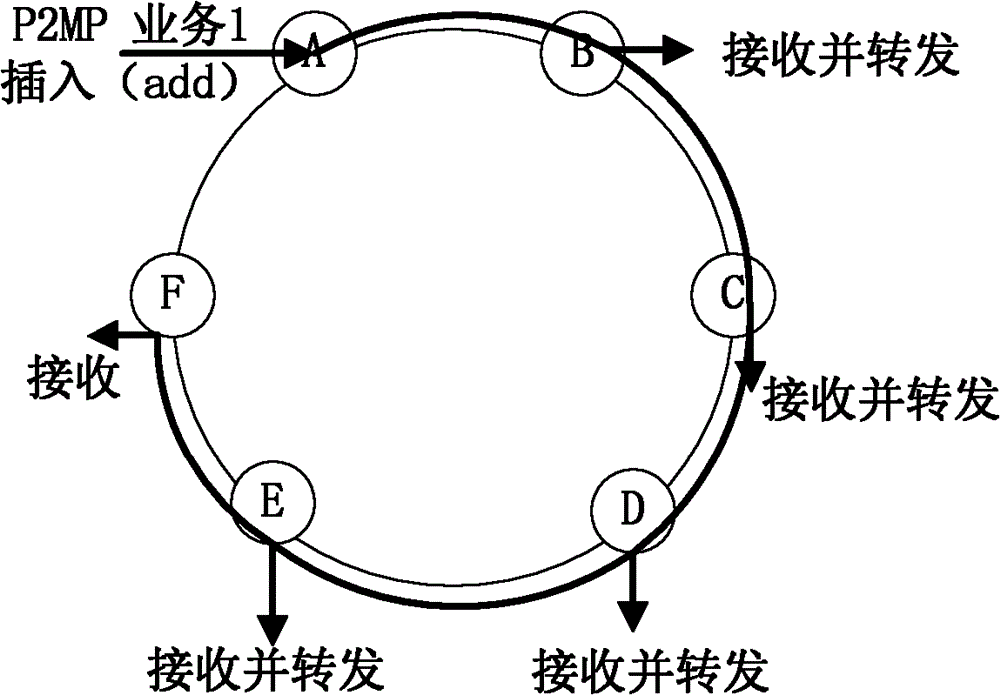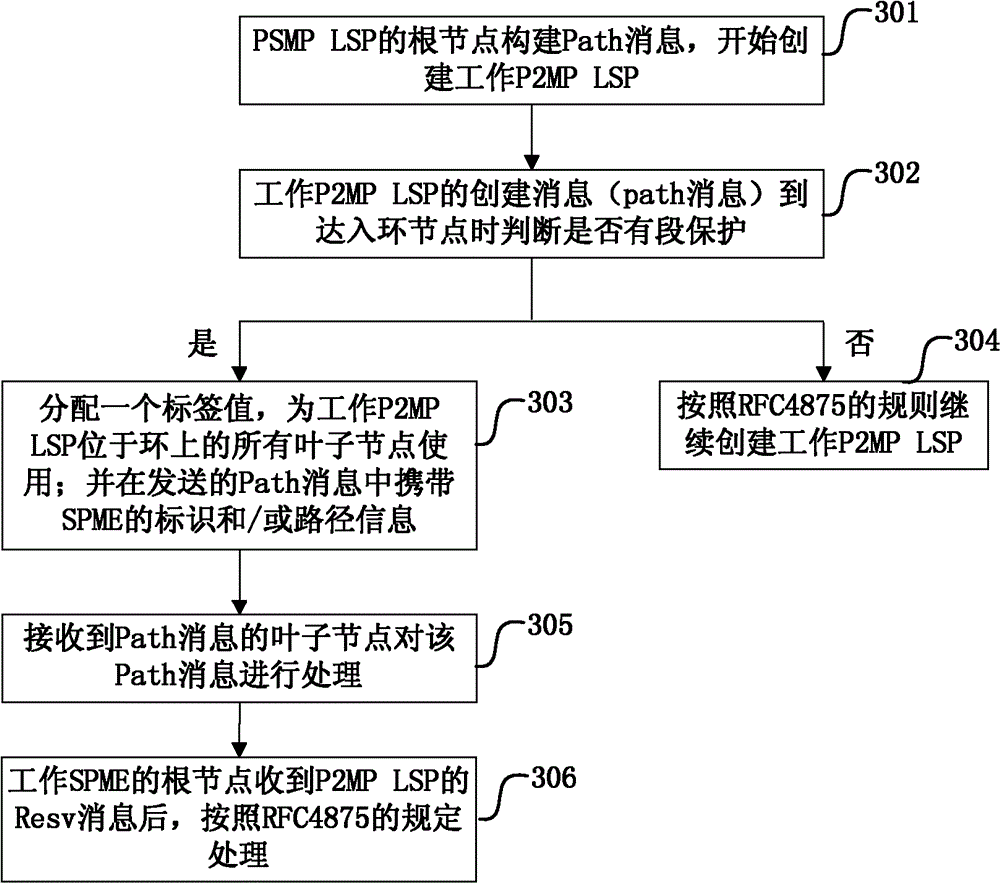Service transmission method based on ring network protection and node used for service transmission
A business transmission and node technology, applied in the field of data network communication, can solve the problems of unrecognizable label Y, unable to correctly forward business, etc., and achieve the effect of correct forwarding
- Summary
- Abstract
- Description
- Claims
- Application Information
AI Technical Summary
Problems solved by technology
Method used
Image
Examples
Embodiment 1
[0067] This embodiment is an example of SPME configuration for ring network P2MP LSP protection.
[0068] With each entry node on the ring network as the root node, create two P2MP SPMEs respectively, one of which is the working SPME and the other is the protection SPME, and the direction of the two SPMEs is opposite. Under normal circumstances, there are at most two nodes on the ring as ring-in nodes, and any other node can be a ring-out node. Here, the simplest example is used to illustrate that only node A is a ring-in node, such as figure 2 As shown, the root node of the working SPME is node A, B, C, D, E and F are its leaf nodes, and along the clockwise direction of the ring; the root node of the protection SPME is also node A, B, C, D , E and F are all leaf nodes, and follow the counterclockwise direction of the ring. The working SPME and the protection SPME are respectively as figure 2 Shown in dashed solid line and dotted dashed solid line.
Embodiment 2
[0070] This embodiment gives an example of label allocation for ring network protection, such as Figure 4 As shown in , the label value is assigned in a unicast manner, and the specific steps are as follows:
[0071] Taking P2MP LSP 1 as an example, the leaf nodes of the P2MP LSP are completely consistent with the leaf nodes of the P2MP SPME.
[0072] Step 401: Node A initiates a P2MP LSP establishment message, here is an RSVP-TE Path message, and node A judges that protection is required and there are two SPMEs as work and protection respectively, then node A assigns a label value (such as 20) to Nodes B, C, D, E, and F carry the label value in the sent unicast Path message;
[0073] Here, the explicit routing information of the P2MP LSP received by node A is shown in Table 1. The source IP address of the unicast Path message sent to each leaf node is the address of node A, the corresponding destination IP address and ERO / SERO is shown in Table 2, and the alert option is ...
Embodiment 3
[0083] Such as Figure 5 As shown, the Path message created by the ingress node is sent to all leaf nodes through the working P2MP SPME. The steps are as follows:
[0084] Step 501: Node A receives the establishment message of P2MP LSP, here is the RSVP-TE Path message, and node A judges that protection is needed and there are two SPMEs as work and protection respectively, then node A assigns a label value (20), and The tag value is carried in the sent Path message;
[0085] Here, the explicit routing information in the Path message of the P2MP LSP received by node A is as follows, but the information contained in the Path message received by node A is not limited to the following content:
[0086] S2L SUB-LSP-B ERO: A, Bobject-B
[0087] S2L SUB-LSP-D SERO: B, C, Dobject-D
[0088] S2L SUB-LSP-E SERO:D,Eobject-E
[0089] S2L SUB-LSP-F SERO: E, F object-F
[0090] In addition, the Path message sent by node A encapsulates the label of the working SPME and the alert label (...
PUM
 Login to View More
Login to View More Abstract
Description
Claims
Application Information
 Login to View More
Login to View More - R&D
- Intellectual Property
- Life Sciences
- Materials
- Tech Scout
- Unparalleled Data Quality
- Higher Quality Content
- 60% Fewer Hallucinations
Browse by: Latest US Patents, China's latest patents, Technical Efficacy Thesaurus, Application Domain, Technology Topic, Popular Technical Reports.
© 2025 PatSnap. All rights reserved.Legal|Privacy policy|Modern Slavery Act Transparency Statement|Sitemap|About US| Contact US: help@patsnap.com



